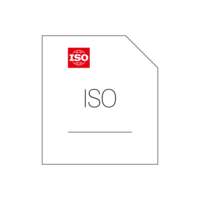

ISO 7393-2:2017
Ausgabedatum: 2017 12 13
Water quality — Determination of free chlorine and total chlorine — Part 2: Colorimetric method using N,N-dialkyl-1,4-phenylenediamine, for routine control purposes
ISO 7393-2:2017 specifies a method for the determination of free chlorine and total chlorine in water, readily applicable to lab- and field-testing. It is based on measurement of the absorption, the red DPD colour complex in a photometer or the colour intensity by visual comparison of the colour with a scale of standards that is regularly calibrated.
This method is appropriate for drinking water and other waters, where additional halogens like bromine, iodine and other oxidizing agents are present in almost negligible amounts. Seawater and waters containing bromides and iodides comprise a group for which special procedures are to be carried out.
This method is in practice applicable to concentrations, in terms of chlorine (Cl2), from, for example, 0,000 4 mmol/l to 0,07 mmol/l (e.g. 0,03 mg/l to 5 mg/l) total chlorine. For higher concentrations, the test portion is diluted.
Commonly, the method is applied as a field method with mobile photometers and commercially available ready-for-use reagents (liquid reagents, powders and tablets). It is essential that those reagents comply with minimum requirements and contain the essential reagents and a buffer system suitable to adjust the measurement solution to a pH range of typically 6,2 to 6,5. If there is doubt that water samples have uncommon pH values and/or buffer capacities, the user has to check and, if necessary, to adjust the sample pH to the required range. The pH of the sample is within the range of pH 4 and 8. Adjust, if necessary, with sodium hydroxide solution or sulfuric acid before the test.
A procedure for the differentiation of combined chlorine of the monochloramine type, combined chlorine of the dichloramine type and combined chlorine in the form of nitrogen trichloride is presented in Annex A. In Annex C, a procedure is presented for the determination of free and total chlorine in drinking and other low polluted waters, for disposable planar reagent-filled cuvettes using a mesofluidic channel pump/colorimeter.
